Types of Ecological Succession
There are two types of ecological succession: primary and secondary. Both types create a continually changing array of species within communities that have been altered by disturbances. However, the progression of species is not random, and certain stages involve specific species. For example, in the earlier stages of ecological succession, only those organisms that can survive in lifeless or damaged habitats are present. Primary succession is the initial settling of a barren area, while secondary succession is the recolonization of an area after a significant disturbance.
As the initial organisms thrive in the new environment, they make changes to the habitat that will attract specific species that can flourish in the new conditions. These more recent species will replace the older ones and make further changes to the habitat. The changes will attract more species, and the cycle will continue until the community reaches a climax. However, other environments undergo continual small-scale disruptions that result in a diverse mix of species, with no specific species being dominant.
Primary Succession
Primary succession occurs when organisms colonize barren, lifeless areas where the soil cannot sustain life. An example is newly formed or sterilized rocks from lava flows or newly created dunes. These environments do not contain nutrient-rich soil or nitrogen-fixing bacteria needed for plants and animals to survive. Primary succession generally happens on land but can also occur where lava has flowed in the ocean.
The organisms that colonize the rocks for the first time are called pioneer species, and they build a basic community that becomes more complex as more species arrive. Usually, the first inhabitants are lichens, algae, coral, moss, or other hardy plants that can survive in habitats with no fertile soil. Pioneer species reproduce quickly and help break down the rock to convert them into fertile soil.
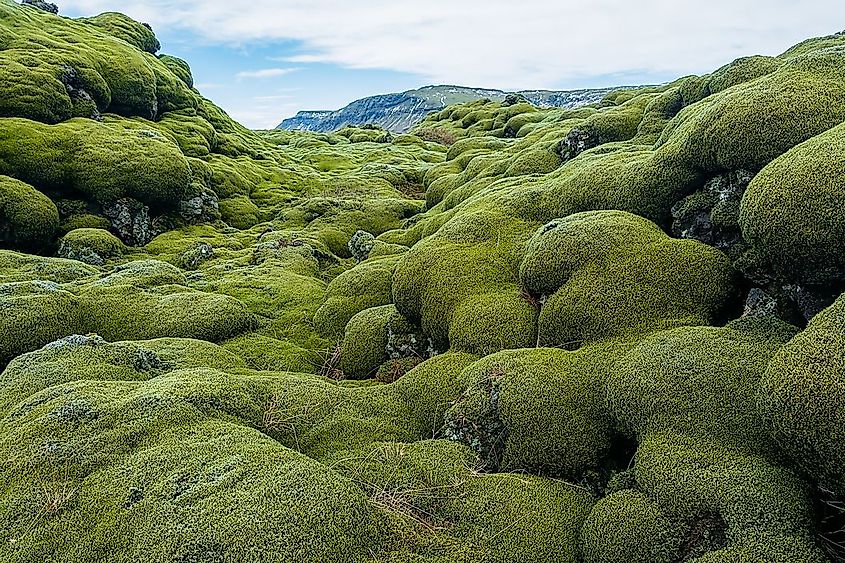
A lava field in Iceland covered in moss. Lichens and mosses are among the first life forms colonizing barren land. Image credit: Wayfarerlife/Shutterstock.com
As these organisms grow and die, they continuously add layers to decomposing organic matter that helps with soil formation. Fungi then start to grow in the new soil, further altering it. These changes enable other plant types to grow, thus creating even more changes to the ecosystem. For example, herbaceous plants start to move in and eventually overtake the pioneer species. Insects and small animals also begin to colonize the habitat. Ultimately, the soil can sustain larger plants such as perennials and shrubs.
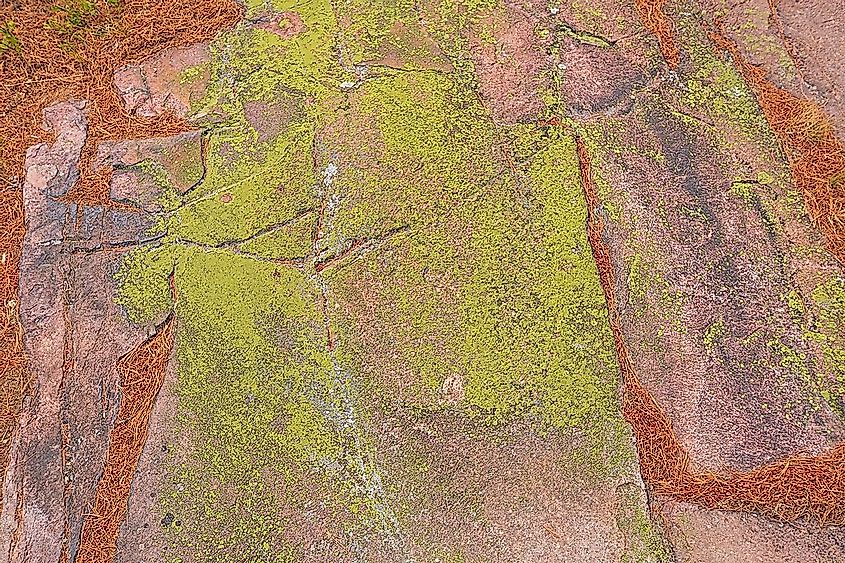
Over centuries, the soil layer thickens and contains many nutrients and beneficial bacteria necessary to sustain advanced plant life. The first trees are generally shorter with no shelter from the sun, but they can handle wind and extreme temperatures.
Rapidly growing vegetation starts to cover more of the habitat, and seeds from taller plants are either brought over by the wind or birds. Eventually, these large trees will cast shade on pioneer species, resulting in their death and decay. This process repeats multiple times until the community reaches a relatively balanced and stable state. This state, called a climax community, can support more species diversity. Primary succession requires more time than the secondary succession to reach a climax community.
Secondary Succession
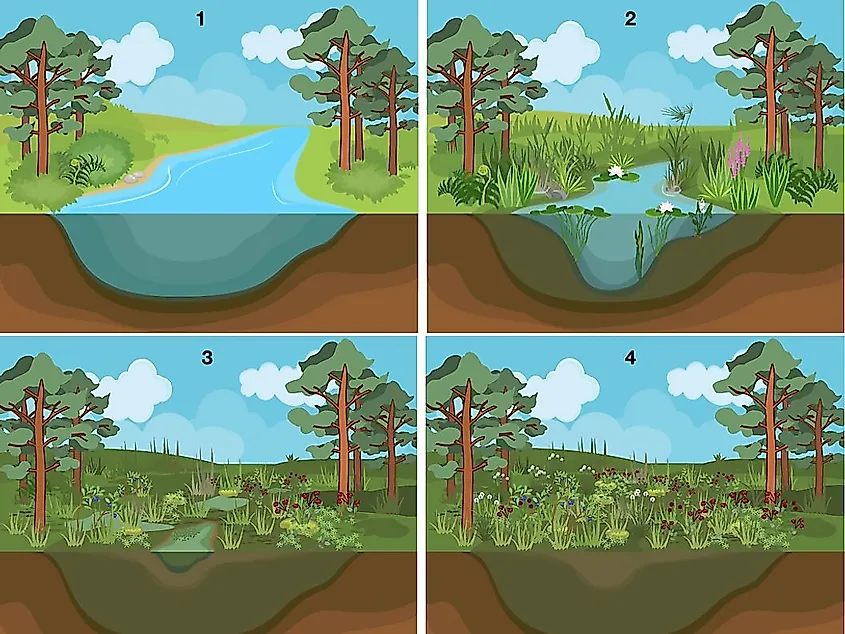
Secondary succession occurs when a previously occupied ecosystem is re-colonized after a disturbance has wiped it out. These disturbances do not eliminate all life and nutrients from the habitat.
An example of secondary succession is when wildfires destroy parts of a forested area. These fires will burn almost all vegetation and kill animals that are unable to leave the site. The nutrients of burned plants and dead animals are returned to the soil in the form of ash. However, if the fires are hot enough, they can destroy the earth and the organisms that live inside it, resulting in sterilization. If this is the case, secondary succession cannot take place.
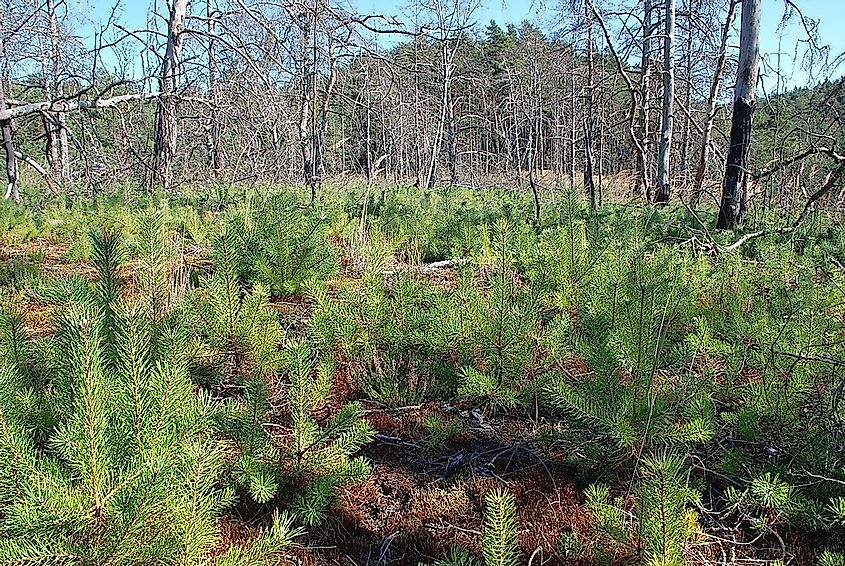
Other examples of disturbances that can lead to secondary succession are tsunamis, hurricanes, floods, landslides, and human activity such as agriculture, logging, or construction. Although these events create a gap in the ecological community, drive out plants and animals, and revert the area into an earlier stage, it typically does not destroy life. However, certain disturbances, such as volcanic eruptions or advancing glaciers, can render an area lifeless. The site will then be re-colonized through the process of primary succession.
Secondary succession is faster than primary succession as the area already has nutrient-rich soil and can be re-colonized much faster than a barren, lifeless place. Seeds and animal life are also closer to the cleared area. The secondary succession stages are similar to primary succession, where species that first arrived in the destroyed area eventually give way to more intermediate species until a climax community develops.
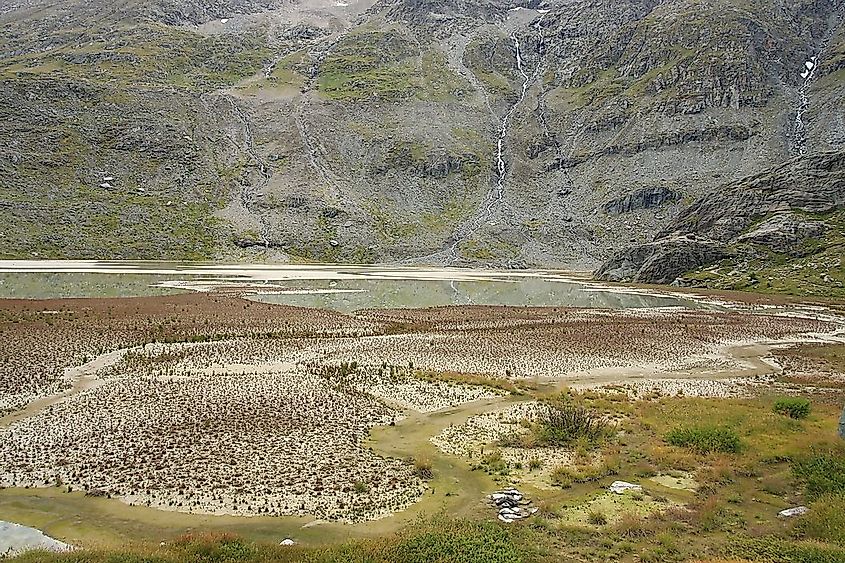
When a fire or natural disaster wipes out a habitat, the taller trees do not rebound. Instead, the first plants to grow back are smaller annual plants followed by quickly growing grasses. Early colonizers are also called pioneer species. Seeds buried can sprout after the disturbance occurs and may thrive due to less competition and shading in the early stages of secondary succession. Insects from surrounding ecosystems are also some of the first creatures to re-colonize the area. Hardier plants and animals then replace the pioneer species.
The initial plants create a soil layer of vegetation that will enable larger plants to take root and grow. Much like in primary succession, when grasses and other species begin to grow or colonize the habitat, small shrubs will start to flourish, followed by small trees. If the area remains undisturbed, these trees become dominant and form a dense canopy.
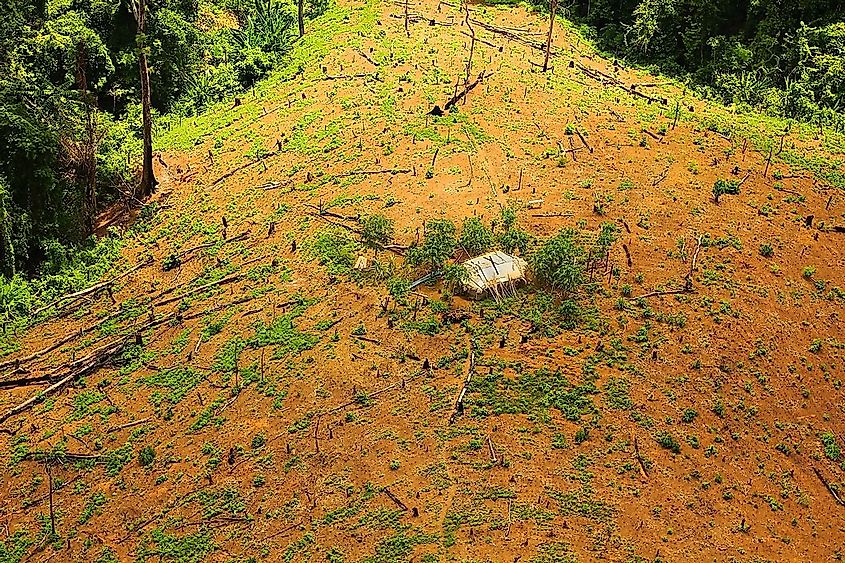
As the trees grow, they start to block out the sun’s light, shading many plant species and altering the structure below the canopy. If there are no further disturbances, the community will eventually return to its original state before it was destroyed and become a climax community. The new ecosystem will either be the same or different from the initial ecosystem, depending on which species colonize the area.
Climax Ecology
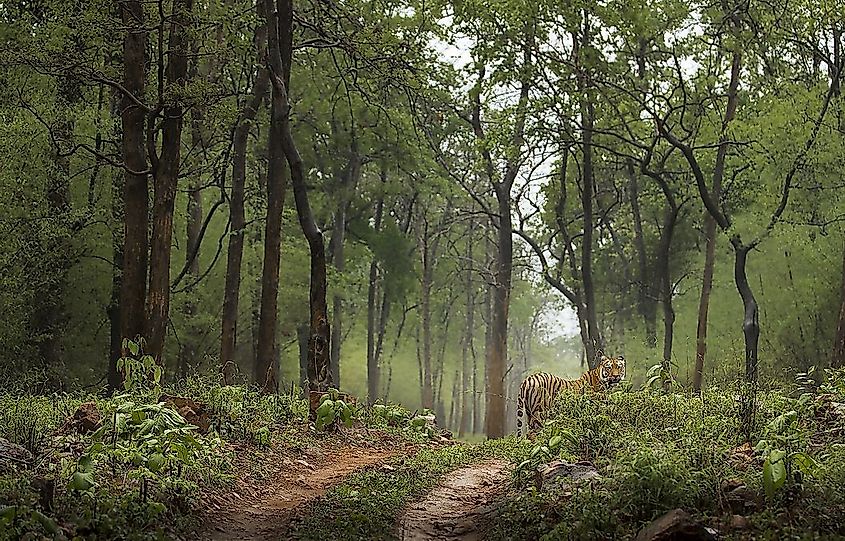
The final stage of both primary and secondary succession is a climax ecology, where a habitat’s species composition remains stable. Recently, ecologists have found that succession does not always take a predetermined path, and stable climax communities may not regularly occur. Ecologists believe that succession can follow different paths depending on the situation, and climax communities may be uncommon in many environments. Although experts believe that climax communities can form in some instances, they are not entirely permanent. Factors such as climate, ecological and evolutionary processes can cause continual changes to the environment.
In some instances, cyclic succession occurs when established communities undergo changes on a cyclical basis. For example, some plants or insects may lay dormant during certain times of the year, temporarily altering the ecosystem.
Ecological Succession Examples
The volcanic island of Surtsey, located off the coast of Iceland, is an example of primary succession. In 1963, Surtsey formed as a result of volcanic eruptions. The island has been protected since its formation and is free from human interference. Scientists were able to slowly track the progression of primary succession, from the arrival of seeds to the island through ocean currents to the appearance of fungi and mold. By 2008, approximately 30 plant species live on the island. New species are moving to the island at a rate of two to five species per year. Scientists have also documented at least 89 bird species on the island, along with 335 invertebrate species. Forestation of volcanic islands may take from 300 to 2,000 years to complete.
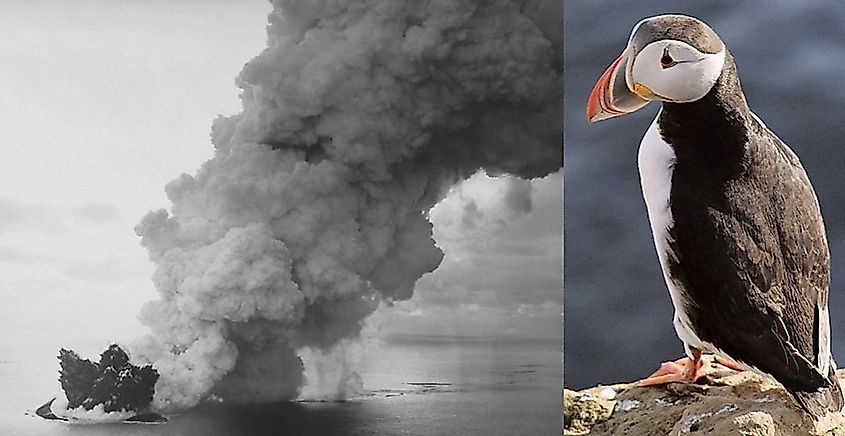
Secondary succession can be seen in Acadia National Park in Maine. In 1947, a massive wildfire burned over 10,000 acres of the park. However, nature began the restoration process as the wind carried seeds back to the area and trees regenerated from stump sprouts. After many years, deciduous trees filled the gap, and the area increased in biodiversity. Despite evergreen trees dominating the area before the fire, deciduous forests have taken over in its place. This event is a prime example of how secondary succession can result in a change of landscape.
Natural disturbances are inevitable. Whether these disturbances create a new, barren landscape or revert an ecosystem to an earlier stage, organisms and species will fill in the gaps and create a new biodiverse ecosystem through ecological succession.


 Users Today : 68
Users Today : 68 Total views : 463739
Total views : 463739